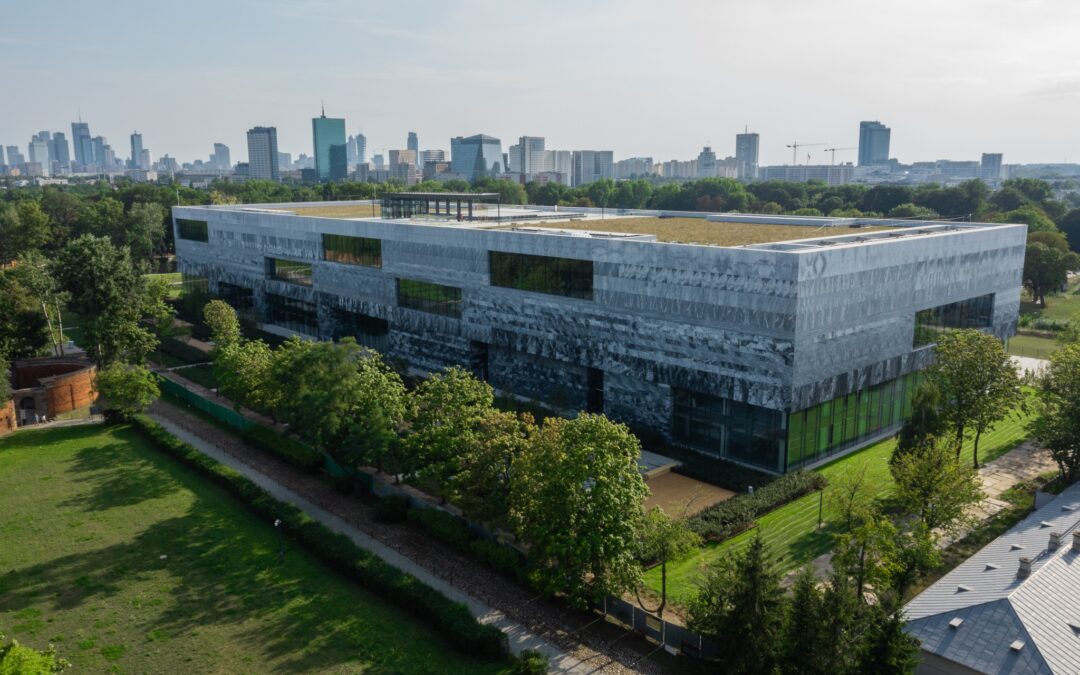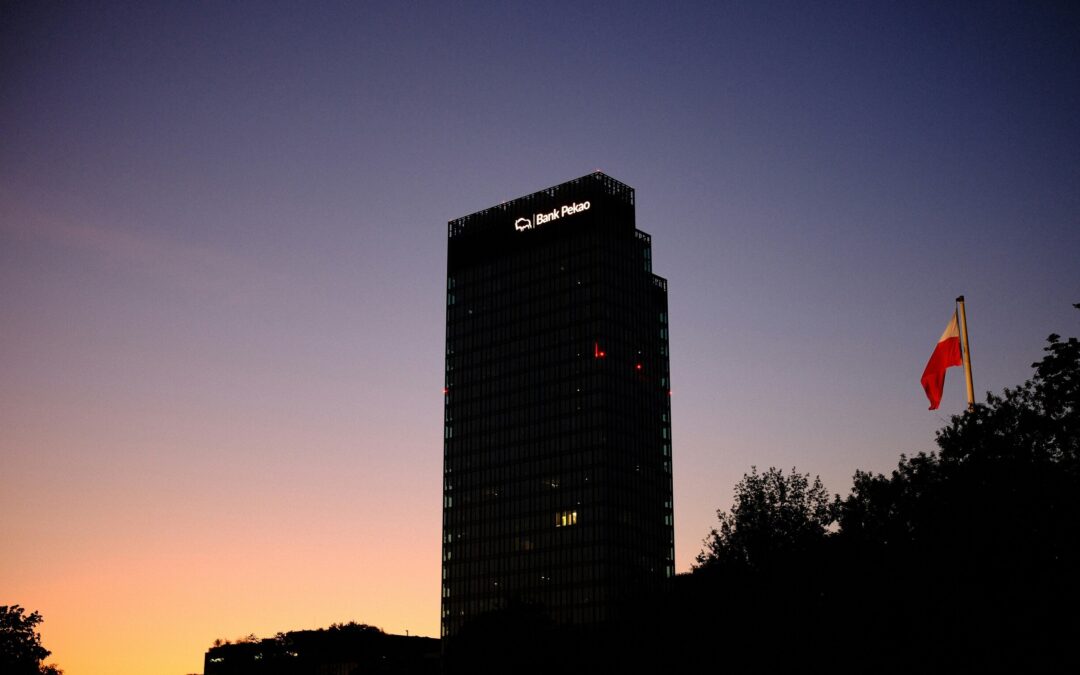A major new museum that will tell Poland’s 1,000-year-long history has opened in Warsaw, in a ceremony attended by the president, prime minister and other senior figures. The Polish History Museum’s permanent exhibition will not, however, open until 2026.
The facility – with 44,000 m2 of floorspace over six levels and built at a reported cost of over 1 billion zloty (€216million) – has been a flagship initiative of the national-conservative ruling Law and Justice (PiS) party, which has pursued an ambitious and assertive “historical policy” during its time in power.
At today’s opening – which comes just over two weeks before elections – the prime minister criticised those who had tried “to make sure this museum would never be built” and declared that the museum would be a “weapon” in the fight for a stronger Poland.
Uroczyste otwarcie Muzeum Historii Polski z udziałem @prezydentpl @AndrzejDuda @PremierRP @MorawieckiM, wicepremiera Jarosława Kaczyńskiego oraz ministra kultury i dziedzictwa narodowego @PiotrGlinski pic.twitter.com/nDQJVTqZKx
— Muzeum Historii Polski | Polish History Museum (@MuzHistPolski) September 28, 2023
The museum, construction of which began in 2018, is located at the site of the Warsaw Citadel, a 19th-century fortress on the banks of the Vistula River. The fortification was built on the orders of Tsar Nicholas I following the suppression of a 1830 Polish uprising against Russian rule.
“This is in an extremely important and symbolic place,” said President Andrzej Duda at today’s ceremony, “a symbol of the enslavement of Poles for 80 years, a symbol of the destruction of the national liberation movement….It was here that those who fought for a free Poland were imprisoned.”
But he also noted that it was not far from the citadel that, at the 1920 Battle of Warsaw, the newly independent Poland successfully repelled a Soviet Russian invasion.
This week marks the centenary of the Battle of Warsaw, at which Poland inflicted a decisive defeat on the Soviet Red Army and changed the course of European history.
Norman Davies explains the battle's causes, course and consequences https://t.co/NGUvgxOkKG
— Notes from Poland 🇵🇱 (@notesfrompoland) August 12, 2020
“This [opening] is an event that truly touches my heart,” he added, noting that the museum was a “dream and idea” conceived by the late Lech Kaczyński, one of Duda’s predecessors as president and a founder of PiS.
“He considered it one of the most important tasks that should be carried for future generations out by those who are responsible for Poland,” said Duda.
Plans for the project were first approved in 2006 – when PiS was previously in power – but only came to fruition after the party returned to office in 2015.
Earlier this year, the state audit office published a report noting that the final cost of the project was 1.2 billion zloty, more than three times what was originally expected, and that its completion had been delayed three times.
Muzeum Historii Polski było marzeniem i ideą śp. Prezydenta Lecha Kaczyńskiego. To jest muzeum największe, z całą pewnością w tej chwili najpiękniejsze w Polsce, absolutnie najnowocześniejsze — Prezydent @AndrzejDuda. pic.twitter.com/5OJBxJvl7m
— Kancelaria Prezydenta (@prezydentpl) September 28, 2023
Speaking at today’s opening ceremony, PiS Prime Minister Mateusz Morawiecki claimed that “those who are afraid of Polish history…[tried] to make sure this museum would never be built”, reports news website Onet.
But now “we are on the right path to rebuilding the role of Poland on the world map” by creating “strong institutions [that are] the key to the strength of the republic”.
“Accurately told history, especially the history of Poland, is not only a reason to be proud, but above all a weapon to fight for a strong Poland and a better future,” he added. “The museum will serve all generations, all inhabitants of Poland, to see what great achievements our ancestors built over 1,000 years.”
The education minister says he will not approve funding for academics who "offend Poles and the Polish nation, the greatest victim of WWII".
Last week a Holocaust scholar from a state-funded institute said Poles did little to help Jews during the war https://t.co/MmuP3AAnul
— Notes from Poland 🇵🇱 (@notesfrompoland) April 25, 2023
The museum currently features a temporary exhibition – Great and Small Stories: Creating the Collection of the Polish History Museum – that features showcases 500 objects from its collection, including a 16th-century tapestry and a uniform that belonged to World War Two general Stanisław Maczek.
Once it is fully operational, the complex – which also features an auditorium and concert hall as well as a theatre and cinema – aims to attract 500,000 visitors annually..
“History unites us, but also sometimes divides us,” said the museum’s director, Robert Kostro, today, quoted by the Dziennik Gazeta Prawna daily.
“We would like this place to be a source of pride but also a place of dialogue and sometimes dispute….where the fight for a better Poland, for a better understanding of history, but also for a better future takes place.”

Notes from Poland is run by a small editorial team and published by an independent, non-profit foundation that is funded through donations from our readers. We cannot do what we do without your support.
Main image credit: Rafał Chmielewski / Muzeum Historii Polski

Daniel Tilles is editor-in-chief of Notes from Poland. He has written on Polish affairs for a wide range of publications, including Foreign Policy, POLITICO Europe, EUobserver and Dziennik Gazeta Prawna.



















